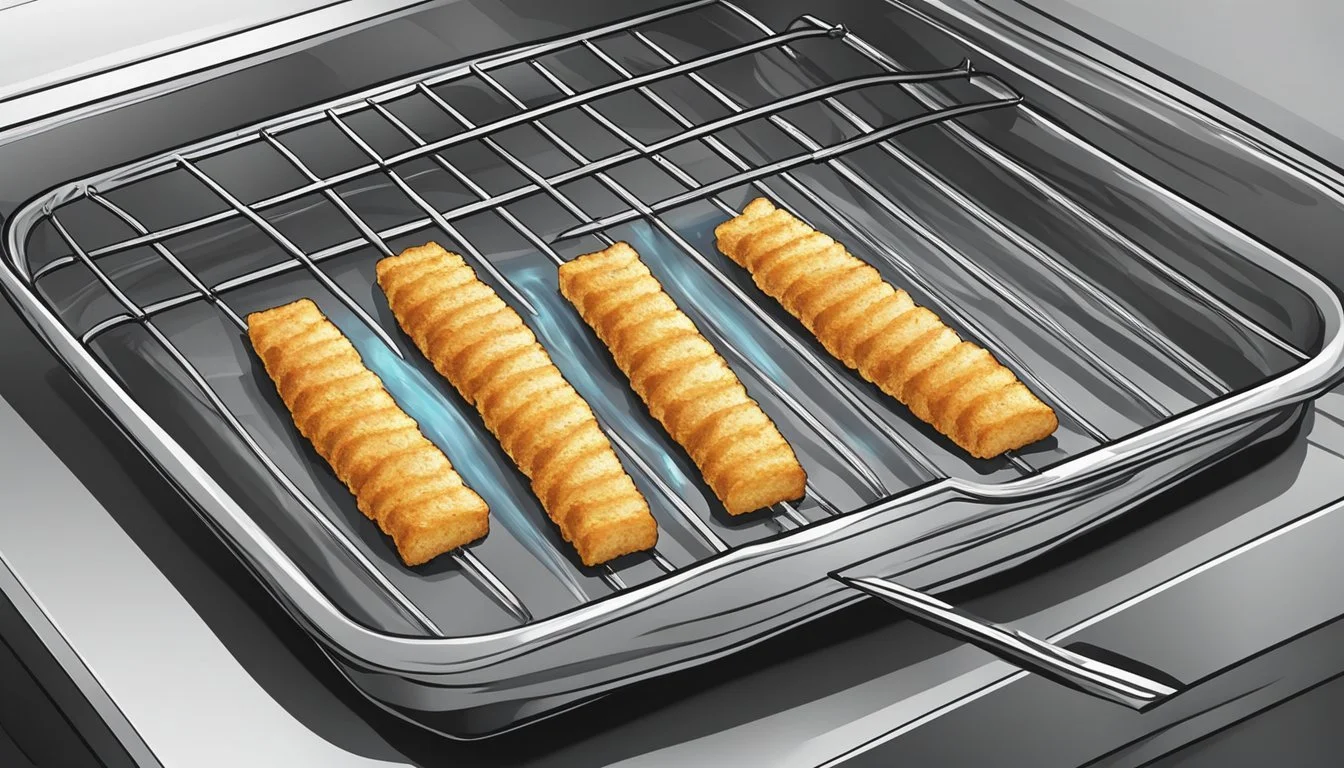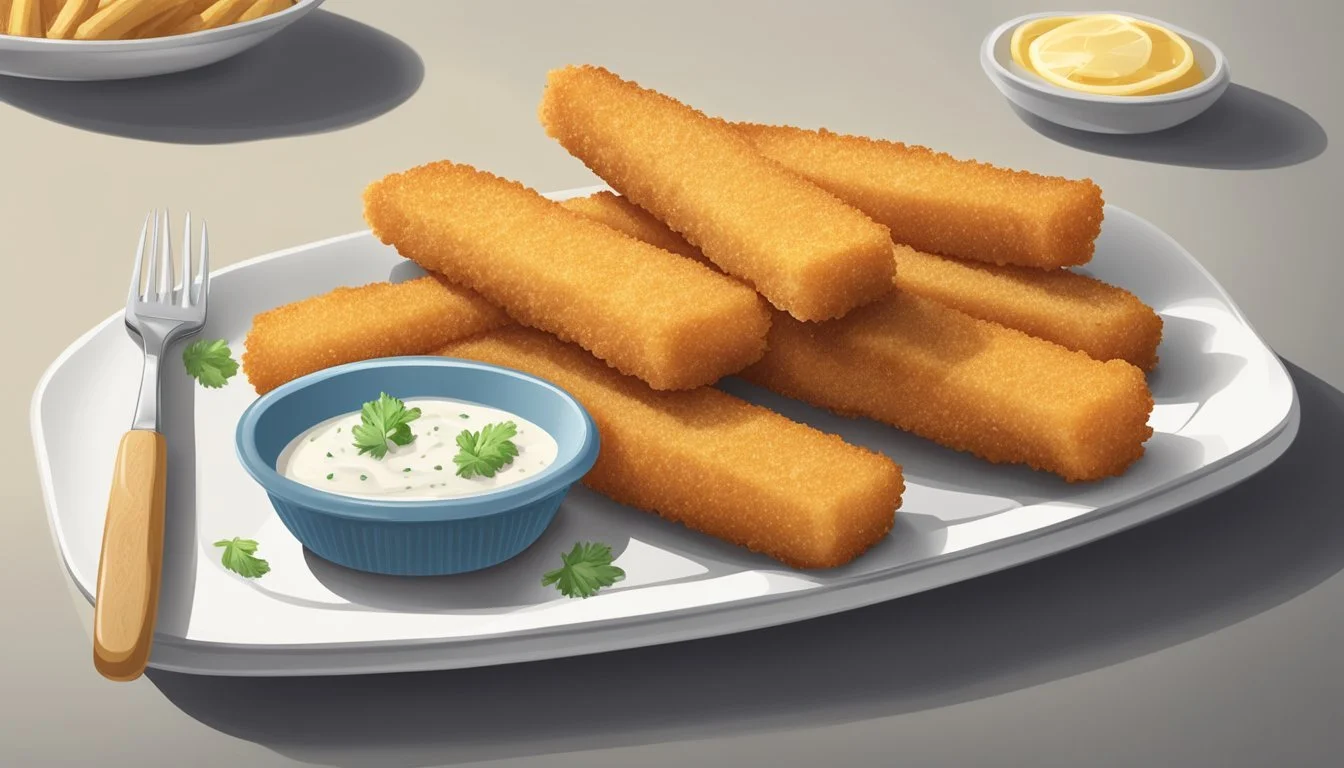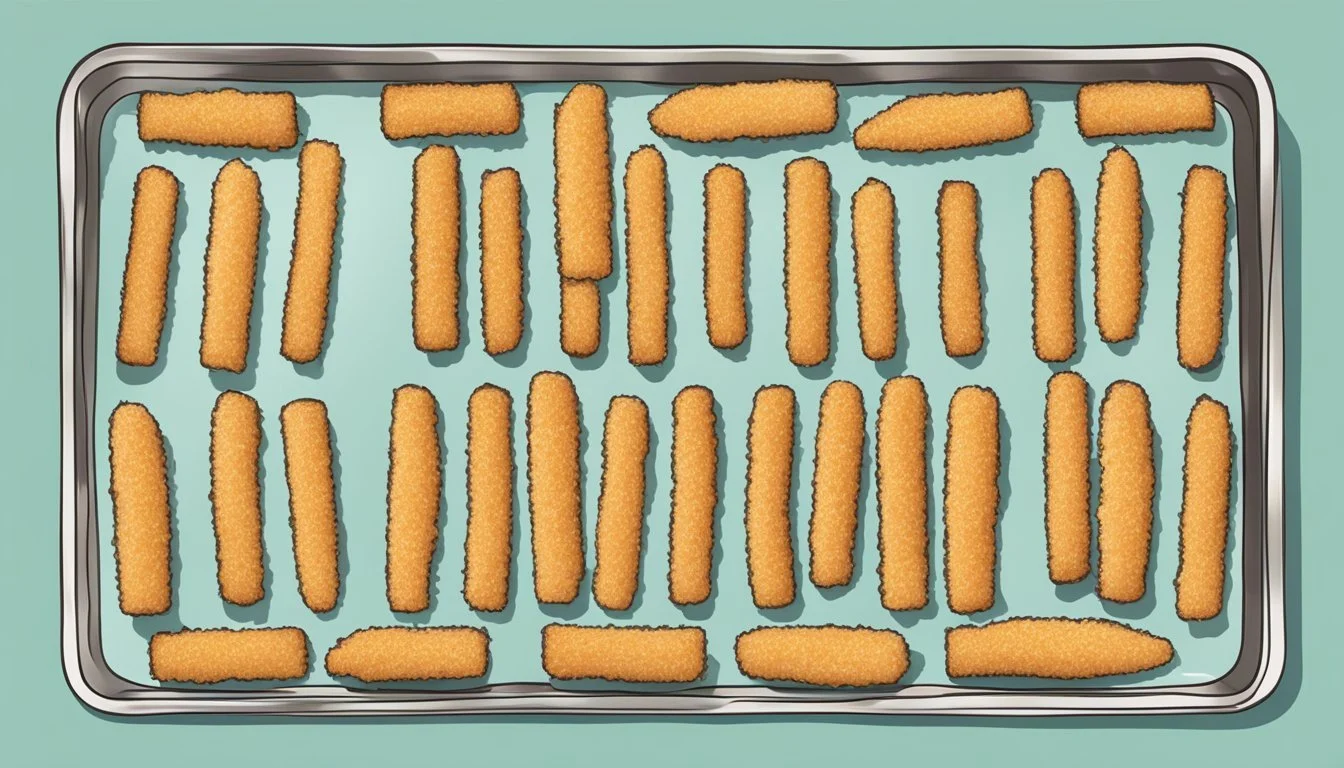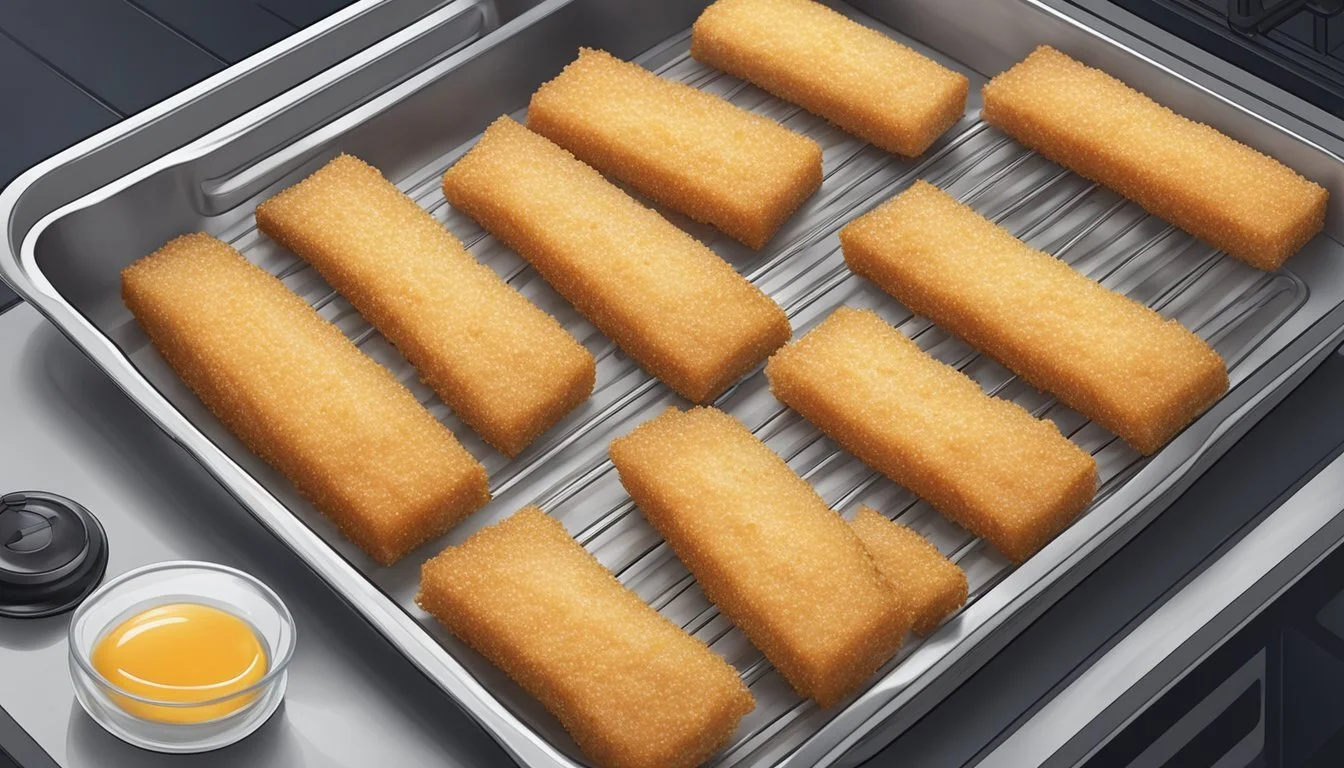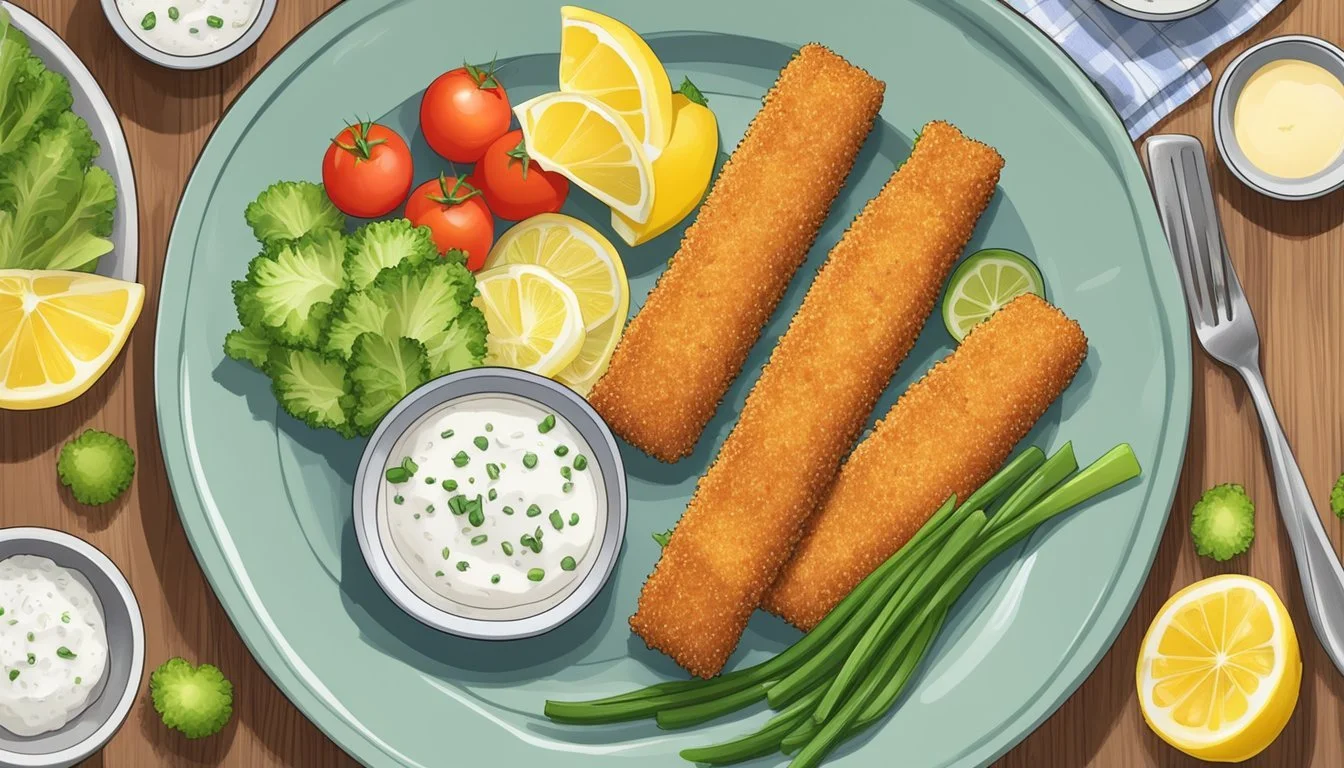How to Reheat Gluten-Free Fish Sticks
Expert Tips for Perfect Results
Reheating gluten-free fish sticks can be a challenge, but it doesn't have to be. Knowing the right techniques ensures they stay crispy and delicious. The best methods to reheat gluten-free fish sticks include using a skillet or an air fryer, both of which help maintain their texture and flavor.
When reheating in a skillet, it's essential to lightly oil the pan and use medium-high heat. This technique helps achieve a golden crust. For those who prefer a healthier option, the air fryer is an excellent choice. Preheating the air fryer to 400°F and ensuring the fish sticks are evenly spaced can result in a perfectly crisp exterior.
For those who desire consistency, using these methods can help maintain the quality of their gluten-free fish sticks. Given the specific nature of gluten-free ingredients, these reheating techniques are crucial for preserving both taste and texture.
Understanding Gluten-Free Fish Sticks
Gluten-free fish sticks are a popular choice for those with gluten sensitivities or celiac disease. They are typically made from white fish, such as cod, which provides a mild flavor and firm texture.
Ingredients
The core ingredients include fish, gluten-free breadcrumbs or panko, and seasonings. Common seasonings are garlic powder, onion powder, and paprika.
Breadcrumbs
Gluten-free breadcrumbs are essential. Options include gluten-free panko, which offers a light, crispy texture. Seasoned gluten-free panko adds extra flavor.
Flour Alternatives
To coat the fish before breading, gluten-free alternatives like almond meal, oat flour, or coconut flour are used. These flours provide adhesion while keeping the dish gluten-free.
Cooking Techniques
Whether baked in the oven or cooked in an air fryer, the goal is to achieve a crispy exterior. Preheating the cooking appliance ensures even cooking.
Making homemade gluten-free fish sticks allows control over ingredients and ensures they fit within dietary restrictions.
Preparation Before Reheating
To ensure gluten-free fish sticks are delicious and safe when reheated, it is essential to store them properly and thaw them correctly if they have been frozen.
Proper Storage Techniques
Storing fish sticks correctly is crucial to maintain their texture and flavor. Place leftover fish sticks in an airtight container in the refrigerator if they will be consumed within three days. Ensure that the container is sealed to prevent moisture from making the fish sticks soggy. Freezing is another viable option. Place the fish sticks in a single layer on a baking sheet and freeze them until solid. Then, transfer the fish sticks to a freezer bag or another airtight container. Label the package with the date so you can keep track of their freshness. They can be frozen for up to a month.
Thawing Frozen Fish Sticks
For the best results, thaw frozen fish sticks before reheating. The refrigerator method is the safest; place the frozen fish sticks in the refrigerator for several hours or overnight. If in a hurry, you can use a microwave. Place the frozen fish sticks on a microwave-safe plate and use the defrost setting in short intervals. Check frequently to avoid starting the cooking process. If you plan to reheat in an air fryer or oven, some light breadcrumbs can help retain crispiness. Ensuring the fish sticks are fully thawed helps achieve a more even heat distribution during the reheating process, maintaining their taste and texture.
Reheating Methods
To preserve the crispiness and flavor of gluten-free fish sticks, reheating them properly is essential. Below are detailed methods using an oven, an air fryer, and a stove.
How to Reheat in an Oven
Preheat the oven to 375°F (190°C). If you are using a smaller toaster oven, set it to 350°F (180°C).
Place the fish sticks on a wire rack over a baking tray, ensuring they are spaced apart for even cooking. Bake for 10-12 minutes or until they become golden brown and crispy.
If using thicker fish sticks, check them halfway and adjust the time as needed. Drizzling some light olive oil can help maintain moisture.
How to Reheat in an Air Fryer
An air fryer is excellent for preserving the crispy texture of the fish sticks. Set the air fryer to 350°F (175°C).
Arrange the fish sticks in a single layer in the air fryer basket, avoiding overcrowding. Heat for 5-7 minutes, shaking the basket halfway through for even cooking.
For added crispiness, spraying a bit of cooking spray can enhance texture.
Reheating on the Stove
Lightly oil a skillet with cooking spray and place it on medium-high heat. Once the skillet is hot, add the fish sticks and fry for 1-2 minutes on one side, pressing them down gently.
Flip and fry the other side for another 1-2 minutes. Repeat until they are heated through, ensuring they are crispy on the outside and warm inside.
Use paper towels to drain any excess oil after reheating.
Seasonings and Accompaniments
Seasonings can elevate the flavor of gluten-free fish sticks. Common options include salt and pepper to start. Adding garlic powder and paprika offers a hint of spice and depth.
For a vibrant touch, fresh or dried parsley can be sprinkled over the fish sticks.
Accompaniments are essential to complete the dish. Consider these dipping sauces:
Cocktail sauce
Ketchup
Honey mustard
A squeeze of lemon not only adds a fresh zing but can also enhance the delicate flavor of the fish.
Pairing options for a balanced meal:
Salad
Roasted vegetables
Gluten-free pasta
These combinations work well whether serving as a main for dinner or lunch, or even as an appetizer.
Serving Suggestions
Gluten-free fish sticks can be a versatile dish, perfect for both lunch and dinner. They can be paired with a variety of sides to enhance your meal experience.
For a balanced meal, serve fish sticks with a fresh salad. A mixed green salad with a light vinaigrette can add a refreshing contrast.
French fries are a classic side that complements the crispy texture of fish sticks. For a healthier option, bake some sweet potato fries instead.
These fish sticks can also be a hit as an appetizer. Arrange them on a platter with a selection of dipping sauces, such as tartar sauce, aioli, or a spicy sriracha mayo.
For a kid-friendly meal, pair the fish sticks with some steamed vegetables or a fruit cup. This ensures a nutritious yet appetizing meal for children.
Another great option is to serve them with gluten-free pasta. A simple pasta tossed in olive oil, garlic, and a sprinkle of Parmesan cheese can complement the flavors of the fish sticks well.
To elevate your meal, consider making fish stick tacos. Use gluten-free tortillas and top them with coleslaw, avocado, and a squeeze of lime for a delightful twist.
Feel free to experiment with different combinations to find what best suits your taste and dietary needs. These serving suggestions aim to make your dining experience both enjoyable and nutritious.
Health and Dietary Considerations
Gluten-free fish sticks provide various nutritional benefits and fit well into specific dietary requirements, making them a great option for health-conscious individuals and those with dietary restrictions.
Nutritional Information
Gluten-free fish sticks often come with beneficial nutrients. They provide a good source of protein and healthy fats, particularly omega-3 fatty acids, which are important for heart health.
Manufacturers usually opt for nutrient-dense ingredients like almond meal or other gluten-free flours, adding fiber and essential vitamins to the mix.
Homemade gluten-free fish sticks made from fresh fish can elevate the nutritional profile further. Fresh cod, for instance, offers high-quality protein and vitamins like B12 and D.
In addition, the cooking method can influence nutritional value. Air frying or baking is preferred as it reduces the amount of added fat, maintaining the dish's healthiness.
Gluten-Free Diet Benefits
A gluten-free diet benefits those with celiac disease or gluten sensitivity, preventing symptoms such as digestive distress and nutritional deficiencies.
Aside from alleviating symptoms, this diet often encourages healthier eating by focusing on fresh and unprocessed foods. This can contribute to better overall health and wellness.
For those on a keto or low-carb diet, many gluten-free fish sticks can be a suitable option. The alternative flours used are usually lower in carbs, fitting well within these dietary frameworks.
Moreover, gluten-free diets can lead to an increase in the consumption of fruits, vegetables, and healthy proteins. This shift can result in increased vitamin and fiber intake, further promoting long-term health benefits.
Additional Tips for Perfect Fish Sticks
For the crispiest results, use an air fryer. Preheat to 400ºF and place the fish sticks in a single layer, ensuring they don't overlap. Cook for 4-5 minutes, flipping halfway through.
When frying on a skillet, lightly coat the pan with canola oil or olive oil. Use medium-high heat and fry each side for 1-2 minutes.
A deep fryer can also yield excellent results. Heat the cooking oil to 350ºF. Fry the fish sticks for about 3-4 minutes, or until they are golden brown and cooked through.
For an even bake in the oven, place the fish sticks on a wire rack set inside a baking sheet. This prevents the underside from becoming soggy and promotes equal heat distribution.
When preparing gluten-free fish sticks, using seasoned breadcrumbs is key. A mix of garlic powder, onion powder, and paprika can enhance flavor.
Considerations for Oils:
Canola Oil: Neutral flavor and high smoke point.
Olive Oil: Adds a subtle flavor but has a lower smoke point.
Space the fish sticks out properly, whether in an air fryer or oven, to ensure even cooking and avoid steaming.
For extra crunch, consider spraying a light coating of cooking spray on the fish sticks before baking or air frying.
Using these tips, you can achieve perfectly reheated gluten-free fish sticks that are crispy on the outside and tender inside.
Homemade Gluten-Free Fish Sticks Recipe
Homemade gluten-free fish sticks are easy to prepare and require a few simple ingredients. Start by cutting white fish, such as cod or tilapia, into 3x1 inch strips.
Season the fish with salt and pepper.
Set up three bowls for dredging. In the first bowl, add gluten-free flour. In the second bowl, whisk together eggs and buttermilk. In the third bowl, mix gluten-free breadcrumbs, garlic powder, onion powder, and paprika.
Here’s a simple breakdown:
Bowl 1 Bowl 2 Bowl 3 Gluten-free flour Eggs and buttermilk Gluten-free breadcrumbs, garlic powder, onion powder, paprika
Dip each fish strip in the flour, then in the egg mixture, and finally coat it with the breadcrumb mixture.
Preheat your oven to 375°F or prepare an air fryer to 375ºF. Place the breaded fish sticks on a baking tray lined with parchment paper or in the air fryer basket.
If using an oven, bake for 25 minutes, flipping halfway through.
For air frying, cook for 12 minutes, ensuring the fish sticks are evenly spaced.
Spray the top of the fish sticks with light cooking oil before baking or air frying. Avoid using olive oil.
Serve the gluten-free fish sticks fresh, with your favorite dipping sauce or a homemade aioli.
Making gluten-free fish sticks at home provides control over ingredients, ensuring they remain safe for those avoiding gluten.
Food Pairings and Variations
Gluten-free fish sticks pair well with a variety of side dishes. Classic choices include a fresh salad, roasted vegetables, or even gluten-free pasta. These options create a balanced meal and complement the fish sticks' flavors.
When considering types of fish, cod fillet and other mild white fish like haddock or pollock are excellent choices. These fish varieties hold up well during cooking and provide a neutral taste that pairs well with various coatings.
For the coating, using a mix of breadcrumbs and panko coating can provide a superior crunch. A combination of garlic powder, paprika, salt, and black pepper in the breadcrumb mix enhances the flavor.
Incorporating grated parmesan cheese into the breadcrumb mix can add a rich, savory note to the fish sticks.
Sample Coating Mix:
Ingredient Amount Breadcrumbs 1 cup Panko coating 1 cup Garlic powder 1 tsp Paprika 1 tsp Salt 1/2 tsp Black pepper 1/2 tsp Grated parmesan cheese 1/4 cup
For dipping sauces, aioli, tartar sauce, or a simple lemon garlic dip can enhance the taste of fish sticks. Mix and match to find favorite combinations.
For a slight variation, you can also season the fish with lemon zest and fresh herbs like dill or parsley before coating it. This adds a refreshing flavor profile to each bite.
Combining these tips can elevate the simple gluten-free fish stick into a dish everyone enjoys.
Alternatives to Fish Sticks
For those seeking alternatives to fish sticks, a number of options can be considered.
Chicken Tenders
Chicken tenders are a popular and versatile alternative. They can be breaded and cooked similar to fish sticks, making them a familiar option for many.
Frozen Fish Fillets
Frozen fish fillets provide a convenient and customizable option. They can be seasoned with various spices and herbs such as garlic, lemon, and dill to add flavor.
Shrimp
Breaded or battered shrimp can serve as a delightful alternative. Shrimp cooks quickly and offers a textural contrast to fish sticks.
Vegetable Sticks
Vegetable sticks made from zucchini, carrots, or sweet potatoes can cater to vegetarian preferences. These can be breaded and baked or air fried to mimic the crunch of fish sticks.
Cooking Methods for Alternatives
Oven: Bake at 400°F, ensuring the items are spaced out for even cooking.
Air Fryer: Cook at around 400°F for 5-10 minutes, shaking halfway through for even crisping.
Skillet: Lightly oil the skillet and cook on medium-high heat, flipping regularly until heated through.
Follow-Up Tips for Leftover Fish Sticks
Storing: Place leftover fish sticks in an airtight container. They can be refrigerated for up to three days or frozen in a freezer-safe bag for up to a month.
Reheating in Oven: Preheat the oven to 375°F (190°C). Place fish sticks on a wire rack over a baking tray. Heat for 5-10 minutes to maintain crispiness.
Reheating in Air Fryer: Set the air fryer to 350°F (180°C). Arrange the fish sticks in a single layer. Heat for 3-5 minutes until crispy. This method helps retain the original texture.
Adding Flavor: To enhance the taste, sprinkle a bit of garlic powder before reheating. It adds a subtle, savory note that complements the fish sticks.
Bread Options: Serve the reheated fish sticks with gluten-free bread. This provides a satisfying pairing for those who enjoy sandwiches or simply want a carb option.
Avoid Microwaving: Using a microwave can make the fish sticks soggy. It's best to use an oven or air fryer for a better texture.
Serving Suggestions: Pair the reheated fish sticks with a fresh salad or steamed vegetables. These sides add nutritional value and variety to the meal.
Proper Handling: Always ensure fish sticks are heated through before eating. This helps prevent foodborne illnesses and ensures they are safe to consume.
Online Resources and Further Reading
For those seeking to perfect the art of reheating gluten-free fish sticks, there are numerous resources available online.
Recipes and Tutorials
Crispy Gluten-Free Fish Sticks (Ready in 30!) | GFP: This website offers a detailed recipe for making gluten-free fish sticks from scratch, emphasizing a crunchy coating and juicy center.
Gluten Free Fish Sticks - What the Fork: Look here for a kid-friendly recipe made with fresh fish, ideal for those who prefer home-cooked meals over store-bought options.
Reheating Techniques
Exactly How To Reheat Fish Sticks - I Test 5 Methods: This article provides practical guidance on reheating fish sticks using various methods, backed by tested results.
How to Reheat Fish Sticks: Retaining Texture and Flavor: Find specific instructions for using ovens or air fryers to maintain the best texture and flavor.
Social Media Communities
Join gluten-free and air fryer communities on social media platforms for tips and shared experiences:
Instagram: Search for hashtags like #GlutenFreeFishSticks and #AirFryerRecipes to discover user-generated content and innovative reheating techniques.
Facebook: Participate in groups dedicated to gluten-free cooking where members often exchange recipes and reheating tips.
E-books and Cookbooks
Consider checking online bookstores or library websites for e-books on gluten-free cooking. These often include sections on reheating and other practical kitchen advice.
Using these resources, individuals can enhance their culinary skills and enjoy perfectly reheated gluten-free fish sticks every time.

